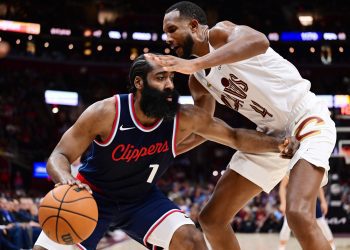Game Context and Rising Tension
In a fiercely contested matchup, the Minnesota Timberwolves and Detroit Pistons delivered an encounter that escalated far beyond regular physicality. Anticipation of a hard-fought battle was evident before tip-off, with both teams showing signs of raw intensity. The matchup, already charged with a palpable edge, quickly evolved into an unpredictable confrontation that mirrored the competitive spirit of the sport.
Escalation and Altercation
Midway through the second quarter, the game’s growing tension took a dramatic turn. After a hard drive to the basket, a disputed foul on Naz Reid set off a verbal exchange with Ron Holland II. What began as a minor dispute rapidly spiraled into a physical clash on the court. Emotions collided as Holland and Donte DiVincenzo engaged in shoves, and soon the disturbance spilled over into the courtside seats. In a series of rapid events, the commotion resulted in seven ejections—five players and two coaches—underscoring the unpredictable nature of the clash.
Coaching Reactions and On-Court Perspectives
The incident quickly caught the attention of team leadership. Minnesota Timberwolves coach Chris Finch lamented the excessive physicality that had become evident as the match progressed. He expressed concern over the escalation, noting that the intensity had reached a point where players appeared to take matters into their own hands. Finch’s frustration was mirrored across the court, as both sides struggled to contain the altercation. Meanwhile, efforts by staff members to manage the situation, including attempts to engage officials, only added to the storm of exchanges between coaching staffs and participants.
Player Dynamics and Quick Judgment
Several key figures were directly involved in the fracas. For the Timberwolves, Naz Reid, Donte DiVincenzo, and assistant coach Pablo Prigioni were among those removed from the game. The Pistons saw ejections including Ron Holland II, Marcus Sasser, Isaiah Stewart, and head coach J.B. Bickerstaff. Veteran players attempted to bring restraint into the volatile scene; one even likened the tumult to a chaotic pile in football, emphasizing the difficulty in untangling the ensuing pileup and stressing concerns over missing future games.
Turning Point and On-Court Rally
Despite the chaotic interruption, the incident appeared to ignite a surge of determination among the Timberwolves. Capitalizing on a 10-point deficit at the time of the clash, the team mounted a comeback that eventually widened the margin to a 19-point victory. Key contributions from figures like Anthony Edwards and Rudy Gobert helped propel the inspiring turnaround. Gobert’s remarkable performance, highlighted by an impressive rebound count, symbolized the team’s resilience and ability to convert adversity into momentum.
Future Implications and Reflections
The aggressive nature of the match raises uncertainties regarding potential suspensions for those involved in the conflict. While some voices within the team advocate for minimal disciplinary measures, caution remains as the league evaluates the intensity of the brawl. The incident serves as a stark reminder of the emotional edge that accompanies high-stakes basketball and the fine line that separates competitive spirit from uncontrollable chaos.
This game, marked by intense physicality and raw emotional expression, underscores the constant challenges in maintaining balance on the court. Both teams now reflect on the incident as they prepare for future encounters, each carrying lessons on restraint, passion, and the unpredictable dynamics of professional basketball.









